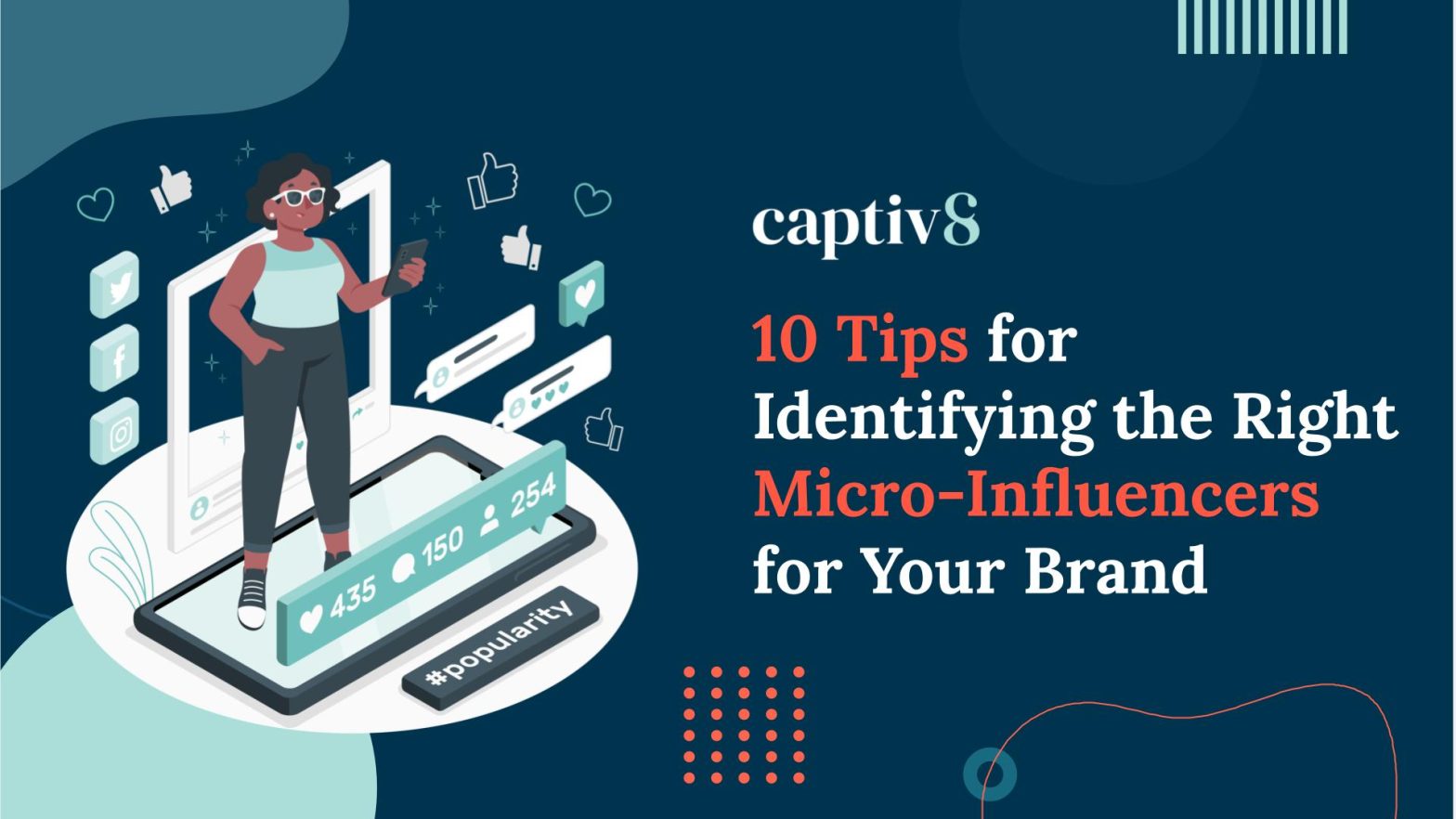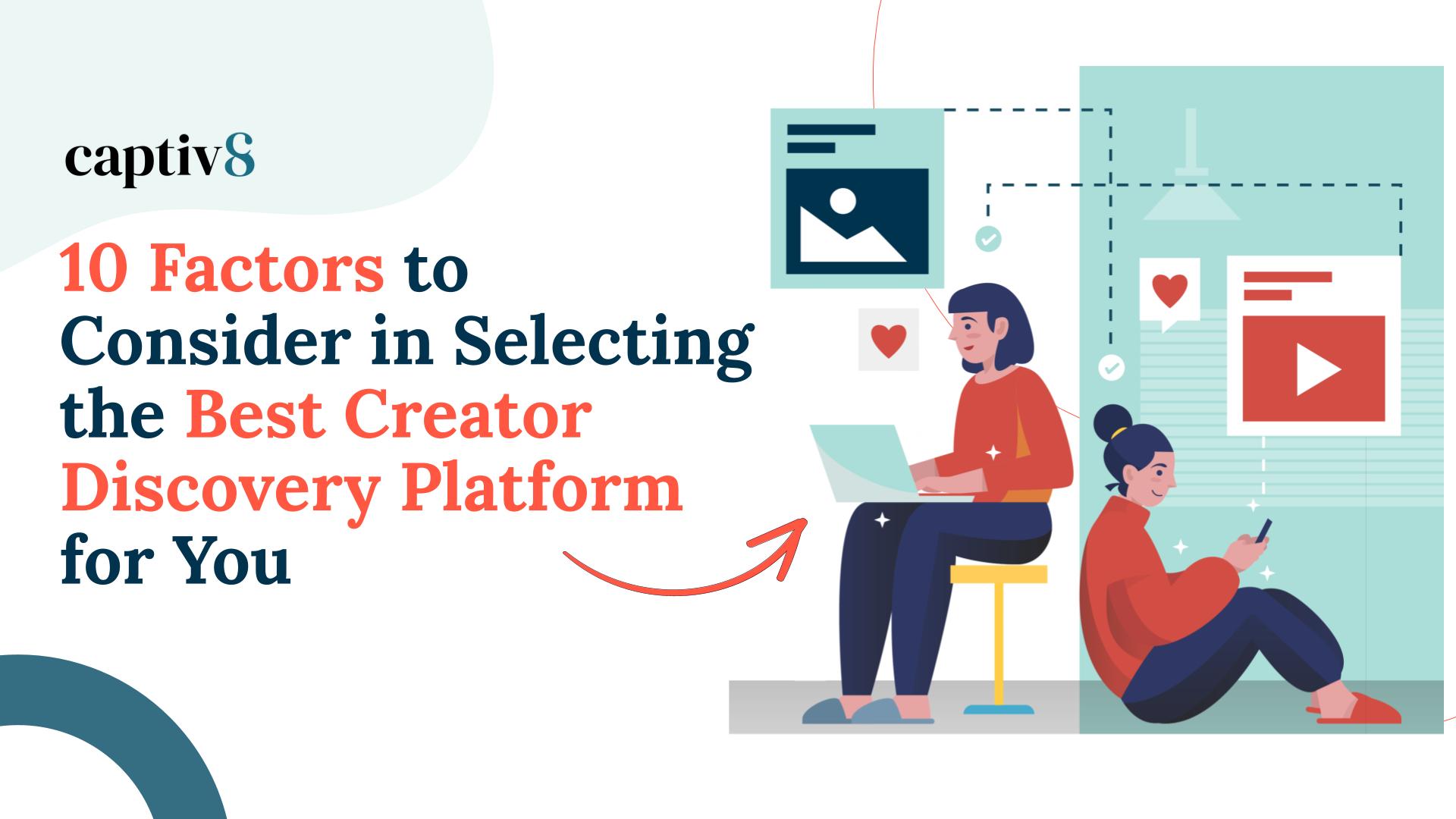10 Tips for Identifying the Right Micro-Influencers for Your Brand

The Tiers of Influencers have recognized micro-influencers as a highly influential group of creators who have become an integral part of influencer marketing strategies. With their smaller but highly engaged and niche-focused audiences, that range anywhere between 10,000 – 100,000 followers, micro-influencers offer brands an effective way to reach their target customers authentically and increase their brand exposure. In fact, the average engagement rate of a micro-influencer is 6%, which is the highest engagement rate of creators by the following size. As brands find themselves more inclined than ever to activate these creators, here are ten essential tips on how to find micro-influencers for your brand, ensuring successful collaborations and maximum impact.
Tip 1: Define Your Goals and Target Audience
Before diving into your micro-influencer search, it’s crucial to define your campaign objectives and identify your target audience. Ask yourself what you aim to achieve through influencer collaborations. Are you looking to increase brand awareness, drive sales, or promote a specific product? By understanding your goals, you can align them with the right micro-influencers who can help you achieve those objectives. Additionally, utilizing your resources to efficiently to gain a clear understanding of your target audience’s demographics, interests, and preferences will further refine your search and help identify micro-influencers who have already built a loyal and engaged community within the target audience you are aiming to reach.
Tip 2: Research Relevant Niche Communities
To find micro-influencers who resonate with your brand, it’s important to identify and explore relevant niche communities, which can be done by utilizing relevant hashtags and keywords. By doing so, you can easily compile a list of micro-influencers already creating content within this industry. Niche communities often have micro-influencers who are highly active and influential within their specific domain and have earned the trust and loyalty of that audience through their expertise, authentic content, and engagement. Collaboration with micro-influencers from relevant niche communities enhances the authenticity and relevance of your brand’s message because these creators have already established a connection with their audience, and their recommendations and endorsements are seen as genuine and trustworthy. By aligning your brand with micro-influencers who are respected and valued within these communities, you can leverage their authenticity to establish a deeper and more meaningful connection with your target audience. Consider utilizing a platform like Captiv8 that possesses global post search, input hashtags and keywords related to your industry to uncover potential micro-influencers who have built a strong presence within this community.
Tip 3: Evaluate Engagement and Authenticity
Engagement and authenticity are vital factors to consider when selecting micro-influencers for your brand. Engagement is a key indicator of a creator’s ability to connect with their audience and by analyzing their engagement metrics, you can gauge the level of interaction and influence they have on their audience. A higher engagement rate indicates a more active and attentive community. In fact, creators with higher follower counts typically have lower average engagement rates, for example, influencers with a follower count between 100,000 to 1 million have an average engagement rate of 1.06% on platforms such as Instagram. Furthermore, assess the authenticity of the creator’s content and their genuine connection with their audience, this will allow you to ensure that their brand partnerships align with their values and that they have a genuine connection with their followers. Knowing this, you can determine whether the alignment of values that resonate with your brand enhances the overall brand reputation.
Tip 4: Review Content Quality and Alignment
The content produced by micro-influencers reflects their personal brand and values which is why reviewing the quality of their content will help to ensure that it aligns with the standards and aesthetics of your own brand. Assessing content alignment involves evaluating whether the influencer’s messaging, values, and interests align with your brand’s identity and objectives. It’s important to choose micro-influencers whose content naturally resonates with your brand and target audience. By examining the quality and consistency of a creator’s content you can determine if they are a suitable fit for your brand. Take the time to review all the content they create. Look for professionalism, creativity, and alignment with your brand’s visual aesthetics and messaging. Additionally, check if the influencer has mentioned or collaborated with similar brands in the past, as this can indicate their familiarity and expertise within your industry.
Tip 5: Assess Audience Demographics and Reach
Understanding the audience demographics of micro-influencers helps ensure that your brand message reaches the right people. Each micro-influencer has a unique audience composition in terms of age, gender, location, interests, and other demographic factors. By assessing these demographics, you can identify creators whose audience closely aligns with your target audience. This targeted reach increases the likelihood of your message. Analyze their follower count and engagement rate to assess the potential impact of their content. Leverage platforms like Captiv8 that provide you with in-depth audience insights and custom geo-filters to narrow down your list of micro-influencers that further your reach within your niche audience. Additionally, consider the overlap between their audience and your target audience, analyzing this provides insights into the potential impact of the collaboration. A micro-influencer with a smaller but highly relevant audience might yield better results than one with a large following but little overlap.
Tip 6: Consider the Influencer’s Reputation and Professionalism
Reputation and professionalism play a significant role in the success of any influencer collaboration. Micro-influencers are experts within their niche resulting in a loyal following that value their opinions which is why researching the micro-influencer’s reputation and online presence is crucial. This can mitigate the risk of associating your brand with individuals who may have controversial or conflicting values. By checking their social media profiles, blog comments, and reviews you can gain insights into their interactions with their audience. Evaluate their professionalism and reliability by examining the quality of their collaborations and their ability to meet deadlines. Utilize Creator Discovery platforms like Captiv8 that showcase Creator Brand Affinity to further help you gain a clear understanding of past collaborations. Furthermore, be vigilant about any controversies or conflicting values that may impact your brand’s reputation or image. Collaborating with micro-influencers that have maintained a positive reputation and demonstrated professionalism can contribute to positioning your brand for success.
Tip 7: Engage in Direct Communication
Once you’ve identified potential micro-influencers, it’s time to engage in direct communication. Direct communication with micro-influencers creates an avenue for a personal connection allowing for an opportunity to tap into their niche audience. Reach out to them personally and introduce your brand, campaign, and why you believe they would be a great fit, outline the brand messaging, positioning, and campaign guidelines to ensure efficient collaboration. Additionally, personalize your outreach messages to show genuine interest in their content and audience, this will assist in the creation of a long-term authentic relationship with them leading to the possibility of future collaborations. Here are some influencer outreach tips and do’s and don’ts of emailing influencers, to assist in your outreach efforts. Micro-influencers have a very close relationship with their audience, which is why creating a personal connection with them through direct communication will result in genuine content creation that their audience will be more inclined to perceive well.
Tip 8: Explore Collaborative Opportunities
When approaching micro-influencers, offer collaborative opportunities that are mutually beneficial and expand your reach and exposure further. They have a deep understanding of their audience and niche, so by exploring collaborative opportunities, you can tap into their expertise and insights. They may even offer valuable suggestions on how to best position your brand, the type of content that resonates with their audience, or innovative ways to engage their followers. Additionally, put your efforts toward understanding their goals and how your brand can provide value to their audience. Consider offering incentives, such as exclusive discounts or early access to products, to make the collaboration enticing and explore long-term partnerships and ambassador programs that allow for consistent and authentic content creation. These opportunities can add value to both your brand and the micro-influencers.
Tip 9: Track and Measure Performance
To ensure the effectiveness of your influencer marketing efforts, establish KPIs aligned with your campaign goals, to consistently monitor the growth of the campaign. This will allow you to pivot and reallocate your efforts in areas of the campaign that require more attention than others. Leverage tracking tools and analytics to monitor the success of your collaborations, and use this to compare benchmarks for influencers of this size to tweak the areas of the campaign that will accelerate the performance levels. Use these tools to measure performance insights as well in order to adapt your strategies and refine your selection of micro-influencers for any future campaigns.
Tip 10: Nurture Relationships and Maintain Connections
Building and nurturing relationships with micro-influencers go beyond individual campaigns. Appreciate the value of ongoing relationships and support creators beyond the scope of your collaborations as maintaining connections with micro-influencers encourages them to continue generating content and advocating for your brand. Providing incentives and platforms for their audience to engage with your brand will also help increase your overall reach. Additionally, micro-influencers have earned their audience’s trust, so by building a deeper connection with them, you are increasing the probability of genuine and credible content that their audience will receive well. Share their content, engage with their posts, and acknowledge their contributions to your brand’s success.
Conclusion
Finding the right micro-influencers for your brand requires a strategic approach. By defining your goals, understanding your target audience, researching relevant communities, evaluating engagement and authenticity, reviewing content quality, assessing audience demographics, considering reputation and professionalism, engaging in direct communication, exploring collaborative opportunities, tracking and measuring performance, and nurturing relationships, you can establish successful partnerships that amplify your brand’s message. Embrace the power of micro-influencers and their ability to connect with your target audience authentically, and stay ahead in influencer marketing efforts. Take a platform tour and learn more about how to activate the micro-influencer best suited to your needs.



